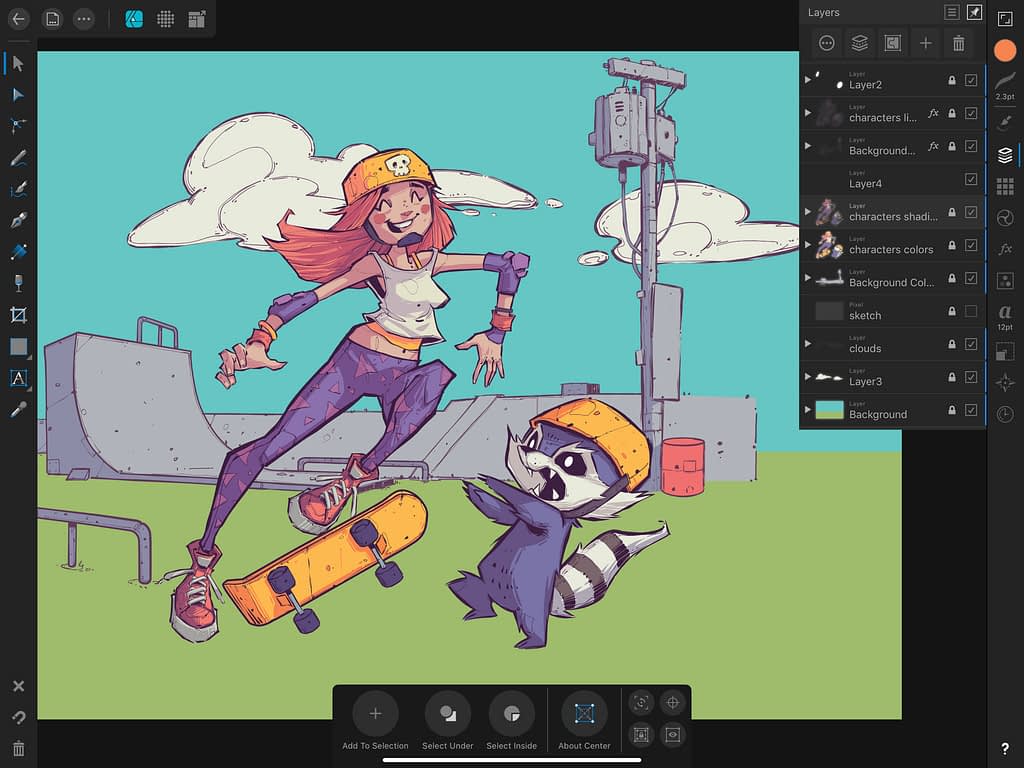

- #Affinity publisher convert raster to vector full#
- #Affinity publisher convert raster to vector professional#
- #Affinity publisher convert raster to vector mac#
- #Affinity publisher convert raster to vector windows#
Serif have put that knowledge at the core of Affinity Designer. Thousands of designers around the world have said how they need their graphic design app to behave. This is true creative freedom and the possibilities are endless. add raster brush texture to your illustrations, edit single pixels on icons, mask and add grain to your crisp vectors, enclose and clip pixel layers.
#Affinity publisher convert raster to vector full#
With a single click, switch between full featured vector and raster workspaces.

No bloat, no gimmicks, just all the tools you need, implemented how you always dreamed.
#Affinity publisher convert raster to vector professional#
Best in class for creating concept art, print projects, logos, icons, UI designs, mock-ups and more, it’s already the top choice of thousands of professional illustrators, web designers, game developers and other creatives who love its silky-smooth combination of vector and raster design tools.
#Affinity publisher convert raster to vector windows#
Optimized for the latest tech on Mac, Windows and iPad, Affinity Designer is setting the new industry standard in the world of design.
#Affinity publisher convert raster to vector mac#
By purchasing from Cherri International, Serif 'Affinity' allows this product to load onto two Mac or PC. Remember the Z-order mention previously? This is used to control reordering and clipping objects by drag and drop in your layers stack ( Layers Panel).Affinity Designer This is non subscription software. In fact the opposite is true-the clipped object can be repositioned, scaled or deleted at any point in the future.Īll Affinity apps support clipping, but due to the different characteristics and functionality available in each app, the technique may be used differently to achieve different results.

Non-destructive by nature-initially, the term clipping may sound destructive.Restricts editing to a specific object or layer.Brings together differently shapes to form a new shape (without affecting the original shapes).

So where does clipping come in? Instead of the above Z-order being used, objects can be made to show inside a targeted ‘parent’ object areas of the bottom ‘child’ object which lie outside the parent object’s outline are hidden, i.e. If objects overlap other objects, then they obscure those from view objects that aren’t overlapped will always be displayed. The top-most object being the nearest to you as you view your screen the bottom-most object being the furthest back in your document. If you’re familiar with a layered stack of objects, as you’d see in a Layers Panel, objects typically stack on top of each other. Andy explores the basics of clipping and the different ways it is used in Affinity Designer, Photo and Publisher.Ĭlipping is an operation you can perform in Affinity that lets you restrict the visibility of an object/layer to another object/layer. Clipping is a fundamental design technique in Affinity apps.


 0 kommentar(er)
0 kommentar(er)
